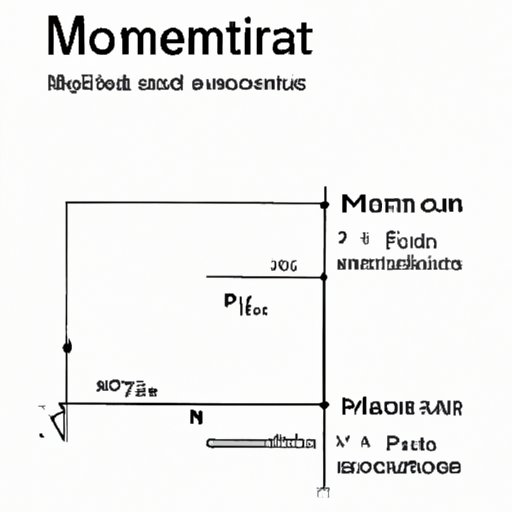
Introduction
Momentum is a fundamental concept in physics that describes the motion of an object. Understanding momentum and how to calculate it is crucial for anyone studying physics or working in a field that involves motion.
Definition of Momentum
Momentum is defined as the product of an object’s mass and velocity. In other words, momentum is a measure of how much “oomph” an object has as it moves through space.
Importance of Understanding Momentum
Momentum is a crucial concept in many fields, including physics, engineering, and sports. Understanding momentum allows us to predict how objects will behave under different conditions, and it forms the basis for many important calculations.
Basic Formula and Units
Formula for Momentum (p = mv)
The formula for momentum is straightforward: momentum (p) is equal to an object’s mass (m) multiplied by its velocity (v). This can be written as:
p = mv
Units for Momentum (kg*m/s)
The units for momentum in the International System of Units (SI) are kilogram-meters per second (kg*m/s). This may seem like a strange unit at first, but it’s actually quite intuitive when you think about it. The kilogram represents the object’s mass, and the meter per second represents its velocity.
Steps for Calculating Momentum
Identify the Object’s Mass and Velocity
The first step in calculating momentum is to identify the object’s mass (in kilograms) and velocity (in meters per second). This information can usually be found in the problem statement or given to you by your instructor.
Multiply the Mass and Velocity
Once you have the object’s mass and velocity, the next step is to multiply them together using the formula for momentum. For example, if an object has a mass of 10 kilograms and a velocity of 5 meters per second, its momentum would be:
p = mv = (10 kg) x (5 m/s) = 50 kg*m/s
Write the Answer with Proper Units
Finally, make sure to write your answer with the proper units of kg*m/s.
Example Problems
Simple Example Problem
Suppose a soccer ball with a mass of 0.45 kg is kicked at a velocity of 15 m/s. What is the ball’s momentum?
p = mv = (0.45 kg) x (15 m/s) = 6.75 kg*m/s
So the soccer ball has a momentum of 6.75 kg*m/s.
Problem with Multiple Objects
Suppose two objects with masses of 2 kg and 3 kg are moving at velocities of 4 m/s and -2 m/s, respectively. What is the total momentum of the system?
To solve this problem, we first need to calculate the momentum of each object:
p1 = m1v1 = (2 kg) x (4 m/s) = 8 kg*m/s
p2 = m2v2 = (3 kg) x (-2 m/s) = -6 kg*m/s
Since the second object is moving in the opposite direction, its momentum is negative. To find the total momentum of the system, we simply add the individual momenta:
p_total = p1 + p2 = 8 kg*m/s – 6 kg*m/s = 2 kg*m/s
So the total momentum of the system is 2 kg*m/s.
Problem with Angles
Suppose a hockey puck with a mass of 0.15 kg is moving at a velocity of 20 m/s at an angle of 30 degrees above the horizontal. What is the puck’s momentum in the horizontal direction?
Since momentum is a vector quantity, we need to find the component of the momentum that is in the horizontal direction. To do this, we need to use a little trigonometry:
p_horizontal = p x cos(theta) = (0.15 kg x 20 m/s) x cos(30 degrees) = 2.59 kg*m/s
So the puck’s momentum in the horizontal direction is 2.59 kg*m/s.
Conclusion
Recap of Steps and Formula
To calculate an object’s momentum:
- Identify the object’s mass and velocity
- Multiply the mass and velocity using the formula p = mv
- Write the answer with proper units (kg*m/s)
The formula for momentum is p = mv, where p is the momentum in kg*m/s, m is the mass in kilograms, and v is the velocity in meters per second.
Importance of Practice and Understanding
Understanding how to calculate momentum is important for anyone working in a field that involves motion. By practicing different types of problems and avoiding common mistakes, you can develop a deep understanding of this fundamental concept.
Common Mistakes to Avoid
Here are some common mistakes to watch out for when calculating momentum:
- Forgetting to include the proper units (kg*m/s)
- Using the wrong formula or formula variables
- Forgetting to account for negative velocities
- Not breaking vectors into their components when necessary
By being mindful of these common mistakes, you can ensure that your momentum calculations are accurate and reliable.





